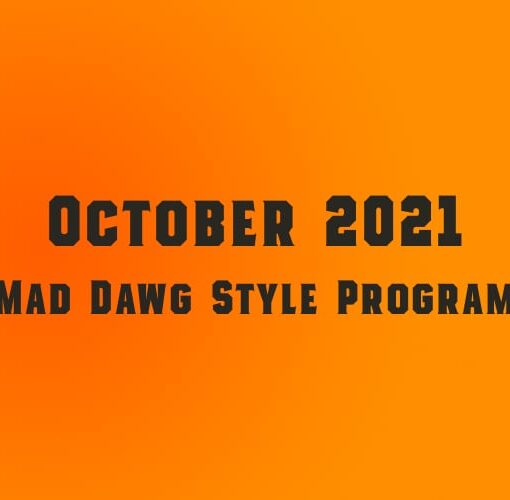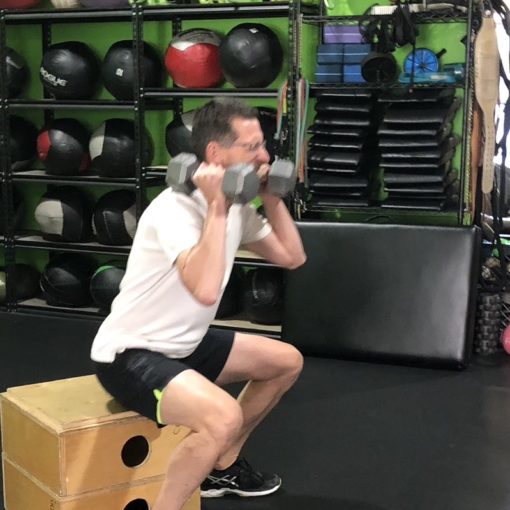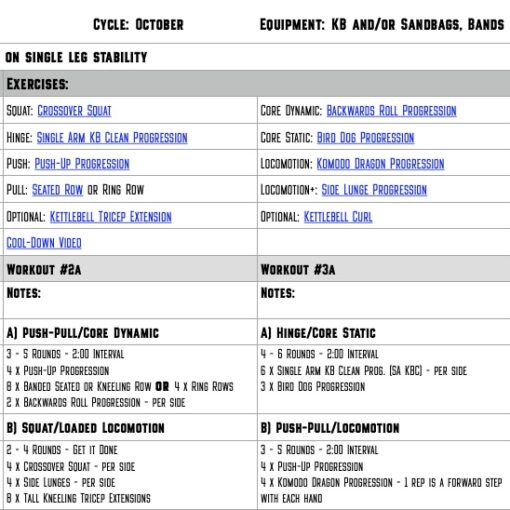Over the past few months, I’ve been playing with some workouts that I think you will like. The theme has been in a nutshell: “Embrace the constraints,*” i.e. how do you train consistently during a pandemic with and without unsafe air quality. Basically, what I’ll call Online Prison Workouts. Both of these situations required me to dig a little deeper into equipment selection, what are the bits and pieces of consistency and what is the difference between training and exercise.
#StopExercisingStartTraining
There is probably some rule against using a hashtag as a section header that I have both simultaneously created and broken at the same time… Apologies. As Nevada started to open up, I made the decision to focus on developing an online training business and train at home exclusively, rather train everywhere except in the gym. I made that decision for a number of personal and professional reasons but a major one was that I wanted to start doing more hiking/biking/skiing and I wanted to start learn how to train more effectively for the those activities. Even though I love American Iron (the gym where i worked), I found that I was doing workouts that were getting me better at being a gym athlete but I spent the majority of my time actually performing (and I use that term very loosely) as an outdoor athlete. I needed to start actually training, i.e. preparing for, the activities that bring me joy.
Creating Consistency or Manufacturing Stability
Here is the trick to creating consistency, find someone who wants (needs?) to train and create a goal/test to measure your success. I had one customer at the gym, my sister-in-law, Becky, who continuing working out with me via Zoom. We starting doing very simple workouts that looked similar to the free workouts that I posted about that time. I slowly started to add former Mad Dawg athletes to our Tuesday/Thursday 9 AM workouts. I usually don’t like to workout with the athletes I train but it was clear to me from the beginning that building a consistent training schedule was more important than what exercise I was doing or what equipment I was using. As the Shelter in Place wove it’s way into May and June I found that my cycling was improving in spite of the fact that I was only riding one or two times a week.
Equipment Selection
As I am sure many of you realize, very shortly into March, there was little equipment available. While I had a number of kettlebells, not everyone could get them so by loaning KBs and finding some here and there, I started focussing on single KB workouts on our Tuesday and Thursday workouts. Over the months I have developed a list of equipment that will get most athletes strong enough to progress steadily in a non-gym activity for a couple of seasons at least.
Athletes who are both new to training and new to coached training:
- Yoga block(s)
- 41” 1/2 inch rubber band
- 20” light rubber band
- 12” light rubber band (hip circle)
- Furniture slider
- Pain Peanut
- Foam Roll
Athletes who have trained before but are new to coached training, add the following:
- 1 x Vinyl kettlebell
- 2 x 2.5 gallon water jugs
- 2 x 5 Gallon water jugs
- 1 x Sandbag (Power)
Athletes who have both trained before and have been coached, add the following:
2 x Kettlebells (either: 8, 12, 16 KG or 12, 16, 20 KG or 16, 20, 24 KG – I like Competition Kettlebells but YMMV)
1 x Jump Rope
1 Box for Step-ups, Split Squats, etc.
1 x Sandbag (Strength) https://ultimatesandbagtraining.com/product/ultimate-sandbag-strength-package/
1 x Some sort of equipment to hang on, e.g. a pull-up bar, rings, TRX, etc.
Workout Framework
Let’s start at the workout and work outwards. There are three components to the majority of my workouts: Warm-up, strength and.. other, which could be more strength, conditioning, whatever is appropriate. In the most general way, it goes from what you need to what you want. Another way to look at the workout is start be developing position, then movement into an out of that position(s), develop strength in the movement and finally, play or integration if appropriate.
For each program there is a menu of exercises that fall under the following categories: squat, hinge, push, pull, static core, dynamic core, locomotion and loaded locomotion. During each program, the athlete will do a workout 2 – 6 times depending on what they need.
Depending on the athlete, there may be be easier, medium and harder workouts. In my 9 AM class, we plan on having one harder workout about every other week. Making a workout hard is not that difficult and staying in the “Fun Hard” zone doesn’t develop mature athletes.
Sample Workouts
I am leaving out the warm-ups of these workouts. For de-conditioned and new-to-training athletes, the warm-up is the workout. For other athletes who have trained before, the new athlete workout is a good warm-up. Keep in mind the warm-up is where you actually change movement quality, so that is where the athlete needs to spend the most attention and intention. A good movement assessment is critical to developing a good warm-up that is appropriate for the athlete.
Athletes who are both new to training and new to coached training:
Workout 1:
Circuit 1: 2 Rounds – Get it Done (Move through each exercise sequentially, rest as necessary but keep moving)
5 x Supine 90/90 Breathing
3 x Lower body Segmental Rolls
3 x Upper body Segmental Rolls
Circuit 2: 3 Rounds – 2:00 Interval
3 – 5 x Lunge Progression
3 – 5 x Hinge Combo
Workout 2:
Circuit 1: 2 Rounds – Get it Done
5 x Supine 90/90 Breathing
4 x Windshield Wipers
3 x Single Leg Hip/Knee extension per leg
Circuit 2: 3 Rounds – 2:00 Interval
10 x Hinge Drills
5 x Forward/Backward Crawl
Athletes who have trained before but are new to coached training:
Workout 1:
Circuit 1:
4 Rounds – Get it Done
Squat: 5 x Squat
Core Static: 5 Breaths Hollow Hold Progression
Circuit 2: 4 Rounds – 2:00 Interval
Hinge: Standing Banded Row
Locomotion: Side Crawl
Workout 2:
Circuit 1: 4 Rounds – Get it Done
Push: 5 x Push-up Progression
Core Dynamic: 3 x Arm Bar
Circuit 2: 5 Rounds – Get it Done
Squat: 5 x Rock to Squat
Locomotion+: 5 Steps Loaded Marching per leg
Athletes who have both trained before and have been coached:
Workout 1:
Circuit 1:
4 Rounds – Get it Done
Push: 5 x Push-up Progression
Core Dynamic: 3 x Arm Bar
Circuit 2:
4 Rounds – 2:00 Interval
Squat: 5 x Goblet Squat
Locomotion+: 40 M (20 m + 20 M) Farmer Walk
Workout 2:
Circuit 1: 4 Rounds – Get it Done
Hinge: 5 x Kettlebell Deadlift
Core Static: 5 Breaths RKC Plank
Circuit 2:
4 Rounds – 2:00 Interval
Push: 3 x Beast Push-up
Pull: 6 x Standing Banded Rows
Locomotion: 9 Steps (per hand) Forward/backward Crawl
* I stole this phrase from “Free Speed: A Talk With Coach Scott Semple.”




